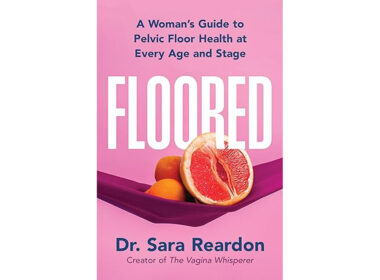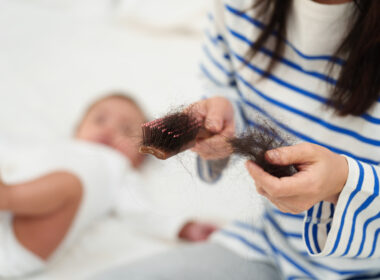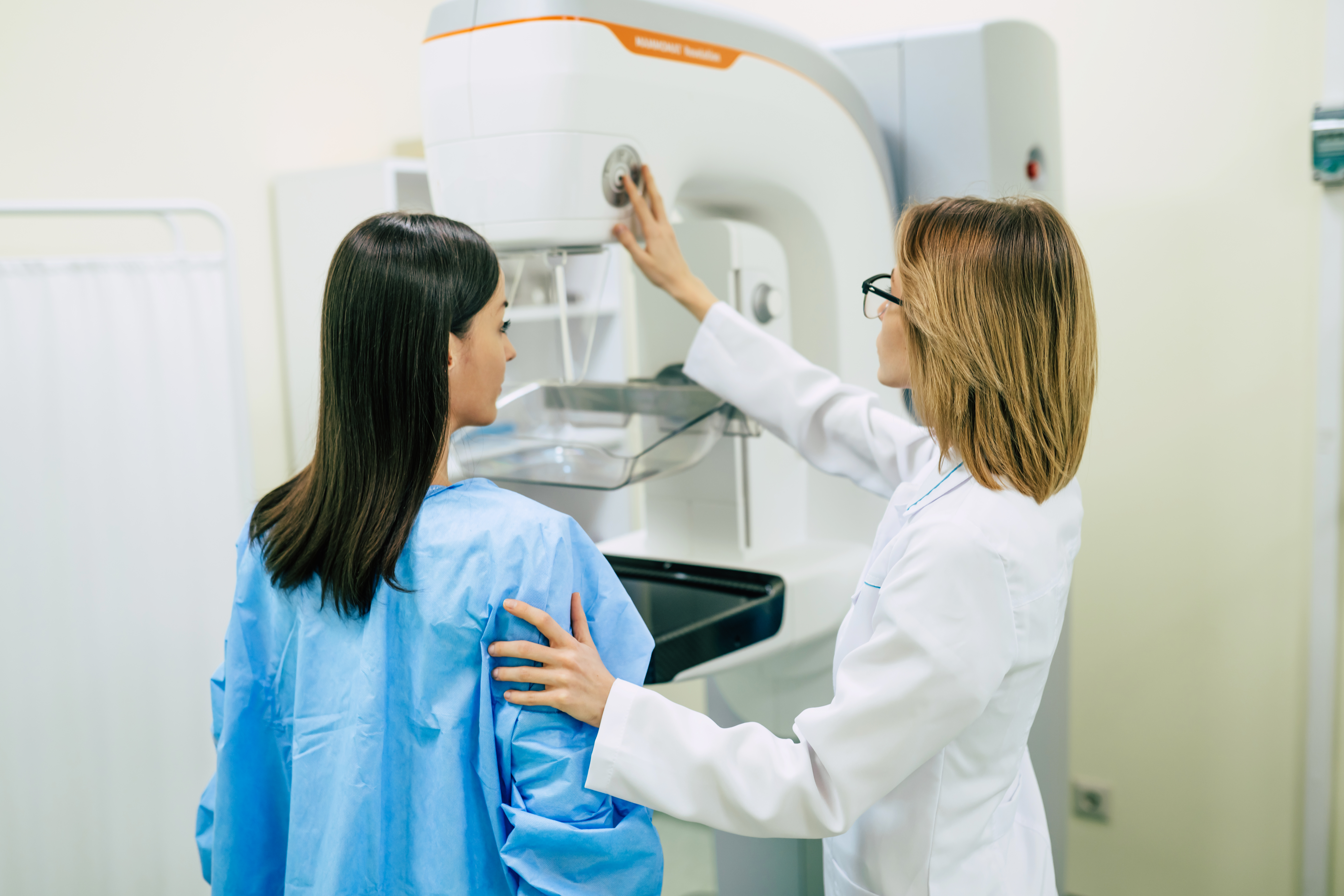About one in eight women experiences symptoms of postpartum depression (PPD) after giving birth, according to the Centers for Disease Control—an incidence rate that is rising. Going beyond the “baby blues,” which are common for a few days after childbirth, PPD is more severe and lasts longer. It can occur anytime in the year following childbirth but most commonly begins in the first few weeks. Proposed causes of PPD include genetics, hormonal changes, and emotional issues, and Mayo Clinic provides a list of risk factors. A 2014 article in Current Directions in Psychological Science, however, explores another possible cause [1]. Could the “mismatch hypothesis” explain our high PPD rates?
Were Our Ancestors Healthier?
In many ways, our ancestors were not as healthy as we are. Health care was not as good (or non-existent!), and many people died young. On the other hand, ancestral diets are becoming popular, as many people realize the incompatibility of the modern, highly processed diet with good health. The theory behind this return to whole foods with few to no additives or processing, is the realization that we are no longer living in an environment (in this case, when it comes to the foods we eat) that matches the way the human body was made (when it comes to foods that nourish us versus foods that harm us).
Similarly, the authors of the Current Directions article, Jennifer Hahn-Holbrook (a psychologist) and Martie Haselton (an evolutionary scientist), hypothesize that there is a mismatch between our current environment and our biology that has led to the modern prevalence of postpartum depression.
Where’s the mismatch?
Hahn-Holbrook and Haselton identify multiple areas where existing “mismatches” between the way our ancestors lived vs. how we live in the modern West could contribute to postpartum depression: diet, breastfeeding, physical activity, sun exposure, and community support. They also examined the evidence for how these mismatches might be alleviated to help prevent postpartum depression in new mothers.
Diet
How our ancestors ate, and why it matters
Humans in preagricultural society, say Hahn-Holbrook and Haselton, ate mostly wild meats, starchy tubers (think potatoes, sweet potatoes, ginger, cassava), and seasonal fresh fruits and vegetables—a diet with more essential micronutrients, fiber, and fatty acids than modern Western diets. While these societies also experienced more food shortage and malnutrition than we do, when people had access to food, it was arguably healthier and more micronutrient-dense in many ways than the modern Western diet.
In particular, Hahn-Holbrook and Haselton describe how the modern diet is deficient in omega-3 essential fatty acids; so called “good fats,” which make up nearly 20% of the human brain by volume, and are known to be powerful anti-inflammatory agents. Hahn-Holbrook and Haselton note that the “good fat deficit” in the Western diet is worsened by pregnancy and lactation, when a mother’s body taps into her fat stores to grow her developing baby.
Alleviating the diet mismatch
Hahn-Holbrook and Haselton cite research suggesting that omega-3 fatty acid supplementation can help treat depression, and that there are negative correlations between omega-3 fatty acids and risk of PPD and between seafood consumption and rates of PPD. (For more on nourishing your body well during the immediate postpartum period, see our article, The Fourth Trimester Guidebook: Postpartum Nutrition.)
Breastfeeding
How our ancestors fed their babies, and why it matters
Breastfeeding (when it works well) releases oxytocin and prolactin, hormones that are negatively associated with PPD symptoms. The more oxytocin and prolactin you have circulating in your bloodstream, the less likely you are to have PPD. However, as Hahn-Holbrook and Haselton note, “breast-feeding rates are much lower today than they were for the vast majority of human history,” with fewer modern women breastfeeding their infants, and more women weaning their breastfed infants earlier than our ancestors did.
Lactating mothers also “show a reduced inflammatory reaction to stress” compared with non-lactating mothers, and additional studies have found correlations between breastfeeding and lower incidences of depressive symptoms when compared to exclusive formula-feeding. Our modern culture, however, makes breastfeeding more logistically challenging, particularly for working mothers, and many mothers who would otherwise experience the benefits of nursing are unable to do so.
Alleviating the breastfeeding mismatch
As someone who struggled so much with breastfeeding that it actually caused depressive symptoms rather than mitigating them, I have to note that research surrounding breastfeeding and mental health is correlational, and there are other factors that can be at play. If a woman is experiencing significant challenges with breastfeeding and either can’t access help or is in a situation that cannot be helped, it will not be protective in terms of her mental health. It’s also possible that societal pressures and critiques of formula are a confounding variable in correlative studies comparing PPD symptoms in breastfeeding mothers with PPD symptoms in mothers exclusively using formula.
While Hahn-Holbrook and Haselton don’t offer any suggestions for alleviating the breastfeeding mismatch, it seems that helping mothers who desire to breastfeed be able to do so, as well as promoting a “fed is best” mentality, could both be key components of alleviating the breastfeeding mismatch [2].
Exercise
Our ancestors moved more, and why that matters
Before desk work and mechanized farming, humans exercised all the time. In fact, Hahn-Holbrook and Haselton cite a study that found that modern hunter-gatherers burn about 1,000 more calories per day than U.S. adults. In addition to the physical benefits, exercise improves mental health through “multiple pathways … including [decreasing] chronic inflammation, insulin resistance, and serotoenergic and dopaminergic activity.”
What’s more, Hahn-Holbrook and Haselton propose that because those pathways are changed in dramatic ways during pregnancy and lactation, “exercise-induced regulation of these systems might be even more important” postpartum. In support of this mismatch hypothesis, they cite research showing decreases in PPD and general clinical depression after interventions involving exercise.
Alleviating the exercise mismatch
Exercising as a new mother can seem like a pipe dream, especially if you were injured during pregnancy or childbirth, or recovering from a C-section. While Hahn-Holbrook and Haselton don’t offer any suggestions for alleviating the exercise mismatch, perhaps a better focus on postpartum recovery–including the healing and strengthening of the pelvic floor, diastisis recti, and other pregnancy or childbirth-related injuries–would encourage mothers to exercise postpartum. Focusing less on getting in long workouts at the gym, and simply on moving one’s body more throughout the day (like taking walks while pushing a stroller or babywearing, standing at one’s desk instead of sitting, etc.) might also be helpful in getting new moms to reframe what they see as opportunities for exercise. (For more on moving your body safely during the immediate postpartum period, see our article, The Fourth Trimester Guidebook: Postpartum Healing and Exercise.)
Sun exposure
Our ancestors got more sunshine, and why that matters
While those of us on the fairer side of the skin color spectrum shouldn’t ditch sunscreen entirely (Scotch-Irish blonde with a lot of skin cancer in her family, here!), some degree of safe sun exposure is important. And, as Hahn-Holbrook and Haselton point out, it’s yet another area of “mismatch” in the modern age, where we spend much more time indoors than out (especially compared to our ancestors).
As humans, our primary source of vitamin D synthesis is sun exposure. Unfortunately, Hahn-Holbrook and Haselton point out, a relatively high number of pregnant women “are deficient in circulating levels of vitamin D,” and these deficiencies “are exacerbated by the nutritional demands of pregnancy and lactation.”
Alleviating the sun exposure mismatch
Vitamin D deficiency can lead to infections and inflammation, which may lead to PPD. Supporting this PPD mismatch hypothesis is a study Hahn-Holbrook and Haselton cite that found that vitamin D deficiency was associated with depressive symptoms in pregnant women. Research is needed to confirm whether or not vitamin D supplementation might reduce PPD symptoms, but Hahn-Holbrook and Haselton cite a study of overweight adults that showed a reduction in depressive symptoms with vitamin D supplementation.
Supplementation aside, getting outside a bit more often with your new baby may be good for both of you!
Community support / Childcare
Our ancestors had a village, and why that matters
Every mother has read at least one article online mourning the loss of the mother’s “village” in modern Western culture, if she hasn’t experienced it herself. I personally can see a huge difference between my first pregnancy and my current pregnancy, thanks both to a village of moms I’ve built around myself (and the lack of COVID restrictions post-pandemic!). I’m looking forward to a much more mentally healthy postpartum this go-around.
Hahn-Holbrook and Haselton note that “in the Western world, nuclear families often live hundreds or thousands of miles away from close kin.” Today, families also tend to have fewer children, spaced closer together, meaning both that mothers are less likely to have older children who can help care for younger children and that they often must care for multiple young children at once.
Without the support of close family, PPD can develop. Hahn-Holbrook and Haselton cite a study that found that “weak or absent social support was one of the most consistent predictors of postpartum depression.” They also cite the fascinating “Latina paradox”—the fact that Mexican immigrant mothers in the United States have lower rates of PPD than white mothers, even though they are more likely to be economically disadvantaged and single. The cause of this paradox, researchers think, is that Latina women tend to have much more family and community support than white women—further underscoring the essential nature of the “village” to a new mother’s health and well-being.
Alleviating the community support mismatch
As Hahn-Holbrook and Haselton note, “nannies, babysitters, and daycare centers can help take the place of extended-family child care networks. However, these solutions are expensive and might not be able to replace the emotional support provided by family.” With more GenZ and Millenials moving back home than ever before, it will be interesting to see whether younger mothers are able to reap the mental health benefits of being close to family.
How can we support postpartum moms?
More research on the mismatch hypothesis and PPD is definitely needed, as Hahn-Holbrook and Haselton note. There are also other predictors of PPD, such as chronic life stress, father abandonment, infant health problems, and history of depression. Furthermore, nearly all the factors they discuss in the article could have confounding variables, and it’s difficult to tease out correlation versus causation.
Still, some of them are common sense, and some interventions are inarguably valuable, from healthy diets and exercise, to breastfeeding support and attempting to bring back the “village” of family and close friends. Counseling, of course, is also a valuable intervention for many women experiencing PPD and other postpartum mood disorders. Consulting with a trusted doctor may also result in the helpful prescription of a drug, such as the new drugs Zuranolone (the first FDA-approved pill for PPD) or Brexanolone, the first drugs approved by the FDA specifically for PPD. Bioidentical progesterone has also been found to help with postpartum depression.
For pregnant and postpartum moms, being aware of all of these options, from therapy and medical interventions to the potential importance of the factors discussed in Hahn-Holbrook and Haselton’s article, can help us plan our postpartum periods and find the help that we need to be healthy—for our own sake and the sake of our children.
References:
[1] Hahn-Holbrook J, Haselton M. Is Postpartum Depression a Disease of Modern Civilization? Curr Dir Psychol Sci. 2014 Dec;23(6):395-400. doi: 10.1177/0963721414547736. Epub 2014 Dec 16. PMID: 28503034; PMCID: PMC5426853. [2] Stark, G. E. (2017). Catholic social teaching and America’s suboptimal breastfeeding rate: Where faith and policy should meet to combat injustice. The Linacre Quarterly, 84(4), 356–366. https://doi.org/10.1080/00243639.2017.1384268











What the authors have missed is elevated testosterone.
I’ve been reading this blog for quite some time. Overall, good information. However, I’m still not convinced about this whole “natural is always better” rhetoric, menstrual syncing (something there’s no scientific evidence whatsoever, sorry ladies). the entire “women are governed by their hormones” thing (not as simple as that) or Pink Stork’s “herbal” pills. Besides, each woman’s birth story is different and not every woman on the planet is burning with six kids fever. Also I don’t like how single women are too often left out of the NFP conversation. Now I do agree that sports and other public fields should honor our feminine cycles, but uh… sometimes all things natural anti hormonal birth control blogs often take the other absolutist extreme. Just my observation.